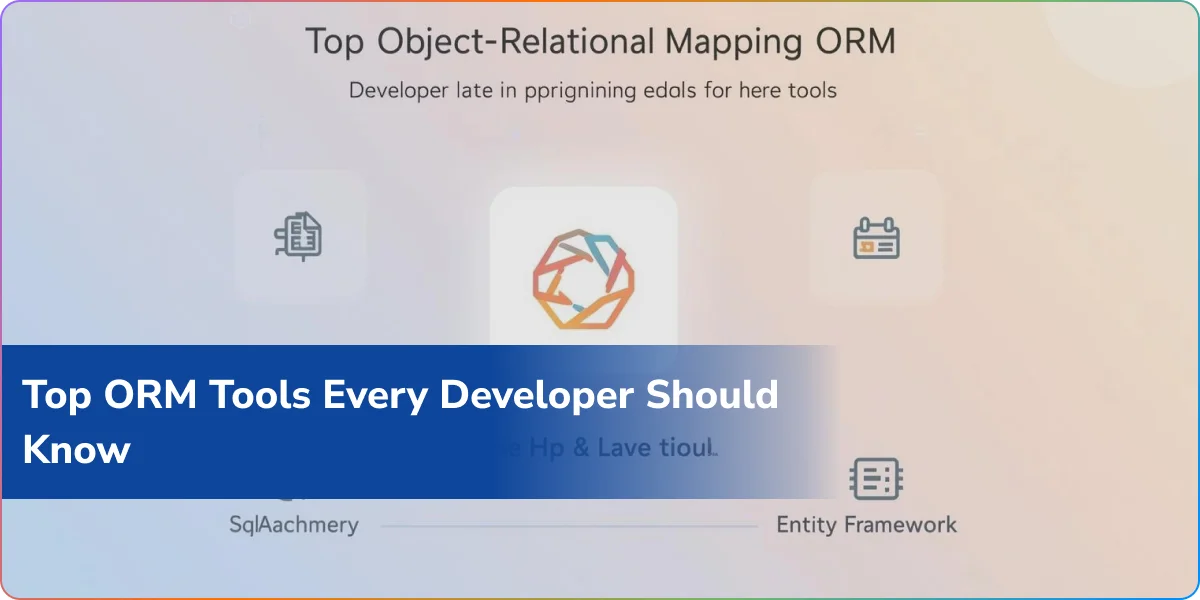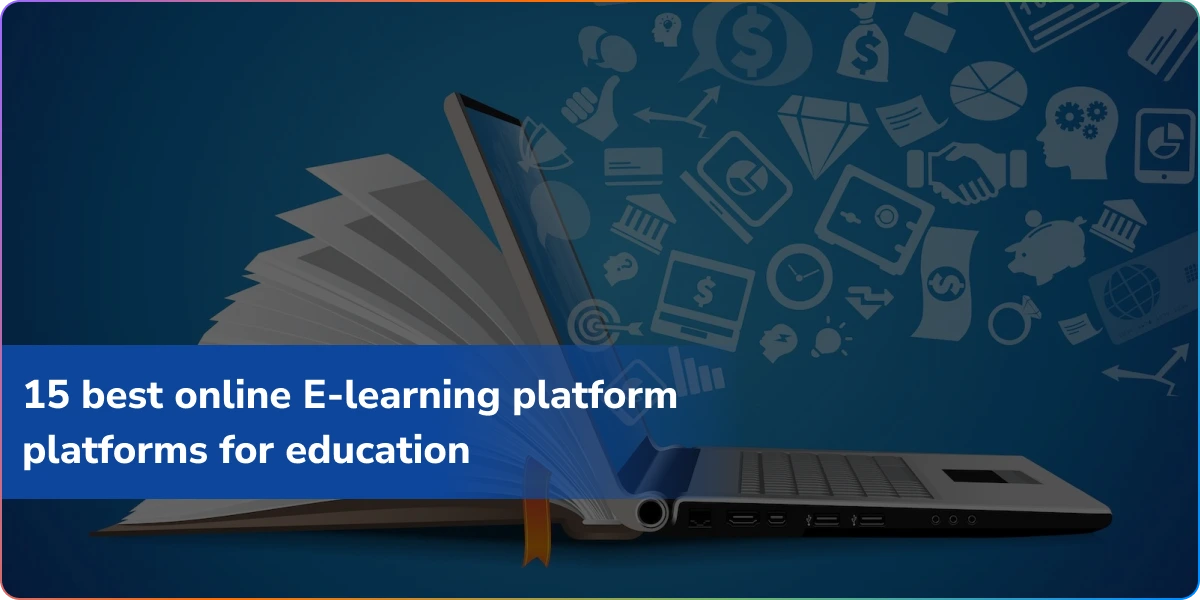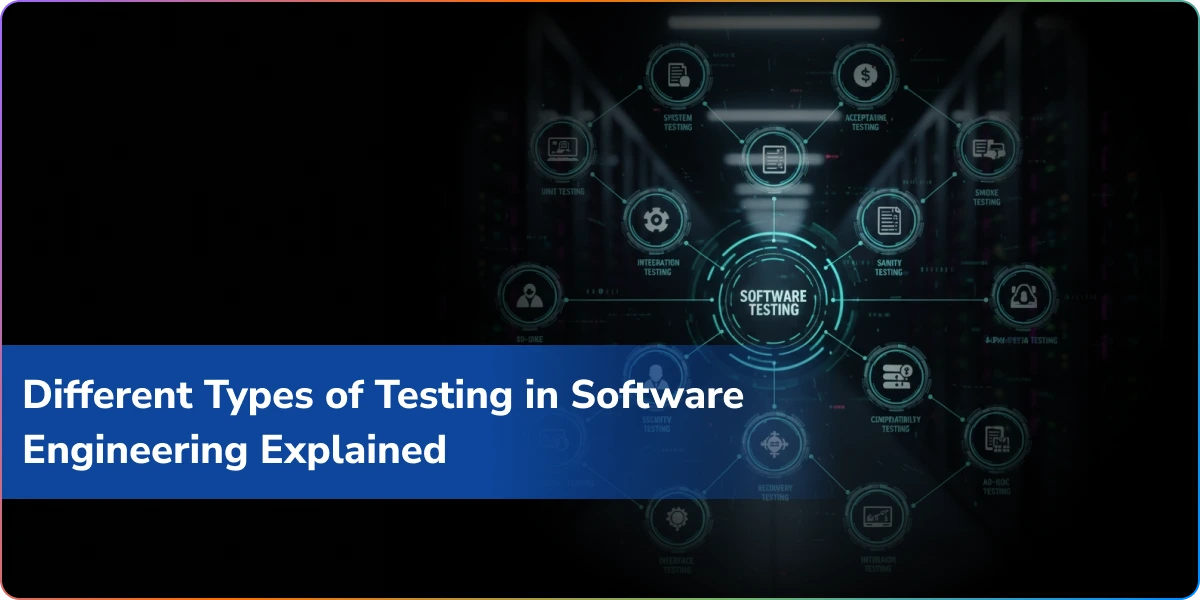One of the most critical tasks of modern software development is database interaction. A lot of times, developers are required to retrieve, update, and manipulate data in relational databases. Traditionally, it has been done through ORM SQL queries. While typing raw queries every time can be cumbersome, error-prone, and maintenance-intensive, that is where ORM tools come into play.
Before proceeding to the top ORM tools, let’s first know what is ORM, what is the full form of ORM, and why it plays an important role in development.
What is ORM?
ORM full form is Object-Relational Mapping.
ORM is a straightforward technique that allows developers to access a database in their preferred programming language, without writing complex SQL queries.
So instead of writing:
SELECT * FROM users WHERE id = 1;
You can simply use an ORM function like:
User.objects.get(id=1)
This shows how ORM bridges the gap between object-oriented programming and relational databases.
What is ORM in Database?
If we think about what is ORM in database, it is a programming design pattern that automates the data conversion process from relational databases to object-oriented programming languages. It helps programmers to access records in the database as objects rather than columns and rows.
Most important benefits are:
- Reduced need for boilerplate SQL code
- Cleaner and more readable code
- Easier collaboration between backend and frontend teams
- Improved security with query sanitization baked in
What is ORM in Java?
To developers who are curious what is ORM in Java, it means simply using ORM libraries and frameworks on Java applications to map Java objects to database tables. For example, Hibernate is an ORM framework that is in high demand in Java. With Hibernate, you can execute CRUD (Create, Read, Update, Delete) operations using Java code without having to write SQL queries explicitly.
This allows Java developers to focus on business logic without worrying about data at the database level.
Why use ORM Tools?
Development becomes quicker, more secure, and more efficient with the use of ORM tools. Here’s why they are necessary:
- Abstraction: They keep the SQL query complexity out of sight.
- Portability: Programs are less database-dependent.
- Maintainability: Code is cleaner and easier to deal with.
- Scalability: ORM frameworks can handle complex queries and large datasets effectively.
Now that we’ve covered what is the full form of ORM and why ORM matters, let’s look at the top ORM tools every developer should know.
Top ORM Tools for Developers
The following is a complete list of ORM tools commonly used among programming languages.
1. Hibernate (Java)
As far as what is ORM in Java is concerned, the first name that comes to mind is Hibernate. It is the most widely used ORM framework for Java apps.
Key Features:
- Automatic mapping between database tables and Java classes
- Sophisticated query language (HQL – Hibernate Query Language)
- Caching features for improved performance
- Supports multiple relational databases
Why Developers Adore It:
Hibernate removes boilerplate JDBC code and presents an easy mechanism for working with database operations using Java objects.
2. Entity Framework (C#/ .NET)
Entity Framework (EF) is developers’ go-to ORM tool in the Microsoft environment.
Major Features:
- Translates C# objects to database schemas
- LINQ (Language Integrated Query) support
- Strongly-typed queries for safety and readability
- Code-first and database-first models
Why Developers Enjoy It:
Entity Framework reduces boring SQL coding and gets along with the .NET Framework.
3. Sequelize (Node.js / JavaScript)
It is the most popular ORM library for Node.js developers.
Main Features:
- PostgreSQL, MySQL, MariaDB, SQLite, and SQL Server support
- Asynchronous operations promise-based API
- Synchronization of the model with the database schema
- High-level migration support
Why Developers Admire It:
Sequelize makes handling ORM SQL queries in JavaScript simple and elegant, making it ideal for web applications of today.
4. SQLAlchemy (Python)
Python developers prefer the use of SQLAlchemy among all ORM tools. It is the most versatile and widely used library.
Key Features:
- Bolstered SQL with support for ORM
- Works with multiple relational databases
- Sophisticated query construction
- Ideal for novices as well as professionals
Why Developers Admire It:
SQLAlchemy gives developers the best of everything: you can use ORM for ease of use or raw SQL for complete control.
5. Django ORM (Python)
Django possesses a homegrown ORM system that’s tightly integrated with the Django web framework.
Key Features:
- Natively supports Django models and migrations
- Easy-to-use query syntax
- Auto schema generation
- Sogi security features (protects against SQL injection)
Why Developers Love It:
If you’re using Django, you don’t need a third-party ORM tool. The built-in Django ORM covers most scenarios.
6. Doctrine ORM (PHP)
It is an advanced ORM tool that is being widely used in PHP applications, especially in combination with Symfony.
Key Features:
- Database abstraction layer
- Advanced query features using DQL (Doctrine Query Language)
- Easy schema management
- Support for multiple databases
Why Developers Love It:
Doctrine makes it possible for PHP developers to build scalable applications without having their code tightly coupled to SQL queries.
7. Prisma (Node.js / TypeScript)
Prisma is a next-generation ORM library for modern apps.
Highlights:
- Type-safe database client
- Auto-generated queries to make developers more productive
- Migration and schema management utilities
- Support for PostgreSQL, MySQL, SQLite, SQL Server, and MongoDB
Why Developers Love It:
Prisma, with great support for TypeScript, prevents runtime errors by catching errors at compile time.
8. Eloquent ORM (Laravel / PHP)
Eloquent is the native ORM tool that comes with the Laravel PHP framework.
Key Features:
- ActiveRecord implementation is elegant
- Query syntax is easy to understand
- Relationships handled automatically
- Migration support integrated
Why The Developers Love It:
Laravel developers can rely significantly on Eloquent because it integrates seamlessly into the framework and simplifies the complexity of interacting with the database.
9. GORM (Go)
GORM is the most popular ORM tool among Go developers.
Major Features:
- Support for multiple databases (MySQL, PostgreSQL, SQLite, SQL Server)
- Auto migration support
- Sophisticated query builder API
- Associations and hooks support
Why Developers Like It:
GORM allows Go developers to focus on business logic without worrying about the complexity of database queries.
10. Hibernate OGM (NoSQL Databases)
While the majority of ORM libraries work on relational databases, Hibernate OGM extends Hibernate support to NoSQL databases.
Main Features:
- Works on MongoDB, Neo4j, Infinispan, and more
- Utilizing familiar Hibernate APIs
- Closes separate SQL and NoSQL worlds
Why Developers Prefer It:
It allows developers to take advantage of ORM concepts even for NoSQL systems.
Choosing the Right ORM Tool
The choice of ORM framework depends on factors like:
- Programming language you’re working with
- Type of database (SQL or NoSQL)
- Project requirements (scalability, performance, maintainability)
- Developer expertise
For example:
- Java developers → Hibernate
- Python developers → SQLAlchemy or Django ORM
- PHP developers → Doctrine or Eloquent
- Node.js developers → Sequelize or Prisma
- Go developers → GORM
Conclusion
It’s important to know what is ORM, ORM full form, and various ORM tools in today’s software development. Be it Java, Python, PHP, or JavaScript, there exists an appropriate ORM framework that can make your life easier.
From Hibernate and Entity Framework to Django ORM, SQLAlchemy, and Prisma, each tool has unique features that simplify database interaction. So, the next time someone asks, “What is ORM in database?” or “What is ORM in Java?”, you’ll not only know the answer but also have a strong grasp of the top ORM tools shaping today’s development ecosystem.
Need expert help choosing and implementing the best ORM tool? Logix Built Solutions Limited has you covered. Let’s build something great together!
FAQ’s
1. What is ORM in database?
It gives a means by which developers can access a database by employing objects instead of encountering direct SQL queries, thereby making database management quicker and simpler.
2. What is the full form of ORM?
ORM full form is Object-Relational Mapping. It’s a technique that spans object-oriented programming languages and relational databases.
3. What is ORM in Java?
It is a technique that enables programmers to map Java objects onto database tables.
4. Why do program developers use ORM tools?
It reduces time, avoids repetitive SQL statement coding, avoids errors, and adds application scalability. They provide database portability across systems as well.
5. Which are the best ORM tools?
Hibernate (Java), Entity Framework (.NET), Django ORM (Python), SQLAlchemy (Python), and Prisma (JavaScript/TypeScript).



